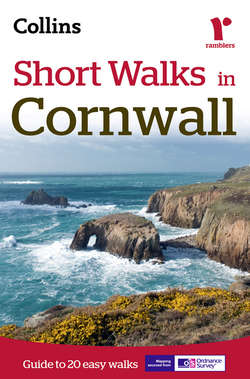Читать книгу Short Walks in Cornwall - Collins Maps - Страница 10
Wildlife in Cornwall
ОглавлениеA diverse landscape produces a diverse flora and fauna, and the walks in this guide cover a range of habitats from the moorland of Bodmin and high exposed heath of Land’s End to the wooded valleys and warm sheltered coves of the south coast.
The cliff tops of Cornwall are carpeted in wild flowers. The colours range from pink thrift to the blue of spring squill and the yellow of golden samphire. Heather and gorse are plentiful. From the coast paths there are also some good vantage points to see birds and animals. Grey seals can sometimes be seen bobbing in the water or sunning themselves on the shore. The playful bottle-nosed dolphin and the common dolphin may be spotted from the cliff path, and you may even be lucky enough to glimpse a pilot whale. Bird life is particularly abundant all along the coast. On cliff faces you may see herring gulls, great black-backed and occasionally lesser black-backed gulls, fulmars, kittiwakes and jackdaws. On other shores you may find shag, cormorant, oyster catcher, rock pipit, pied wagtail and heron. The rare Cornish chough was absent for many years but a project is underway to promote the return of this emblematic bird to the county. Sightings of a wild chough should always be reported. Cornwall’s location on the south-west tip of Britain means that it also receives many migrant birds. The Island at St Ives, Land’s End and the Lizard are all particularly good for observing the arrival and departure of migrants, and Marazion Marsh near Penzance is an important migration stop, particularly for waterfowl and wading birds.
Inland, woodland walks such as Luxulyan will take you through oak, beech, sycamore and ash. Typical woodland flowers include bluebell and wood anemone, and there is a wide range of ferns, mosses, lichens and fungi.
